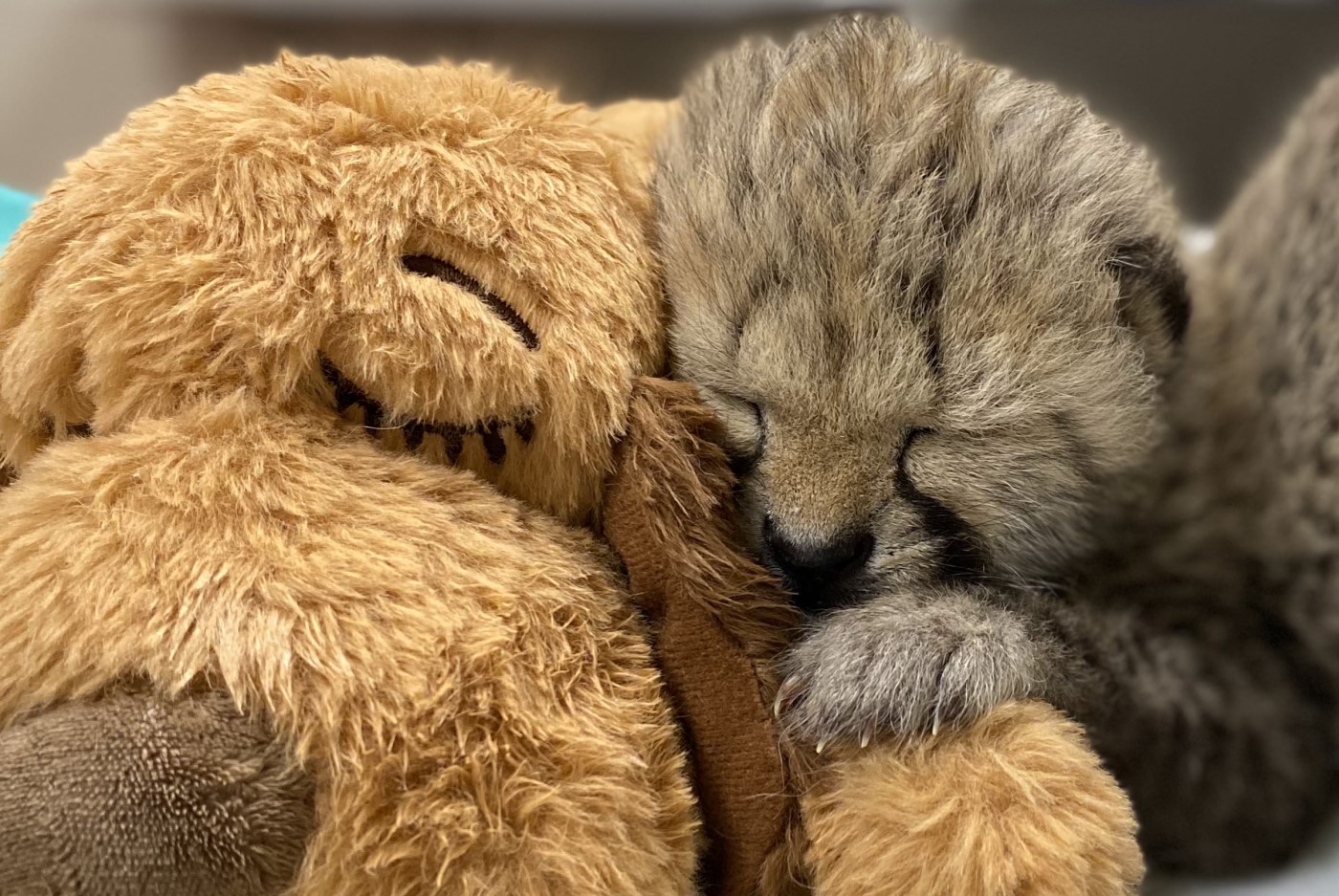#CheetahCubdate: First Vet Exam

Earlier this week, the 2-week-old cheetah cub we are temporarily hand-raising received a clean bill of health from the veterinary team! It was a very short exam, and to maintain minimum contact with him, only the vet and I were present. The vet did a quick physical check, looked in his eyes, and listened to his heart and lungs. Everything looked great!
Also, during this exam, the cub received his microchip. Receiving a microchip is a quick process. If you’ve ever had your pet dog or cat microchipped, it’s the same thing. Using a syringe, the veterinarian inserts the chip right under the skin between the animal’s shoulder blades. Like with any shot, there seemed to be a little pain at first, but the cheetah cub quickly recovered. After the exam, he was back to his usual routine of sleeping, eating and exploring, seemingly unaware of the chip.
All cheetahs in the Species Survival Plan — and most zoo animals — eventually receive a microchip to help identify them. Normally, cheetah cubs receive their microchips around 6 weeks old, but it is particularly important for a foster cub to be chipped before he is introduced to a litter. When he and his future foster siblings are bigger and all look similar, his new keepers have a sure way to identify him with just a flick of a handheld, wand-shaped scanner.
We are now feeding the cub seven times a day, which is roughly every three hours. He still spends most of his time sleeping in an incubator. However, since his eyes opened last week, he moves around more and occasionally plays with the stuffed animals we gave him. Stay tuned for more updates!